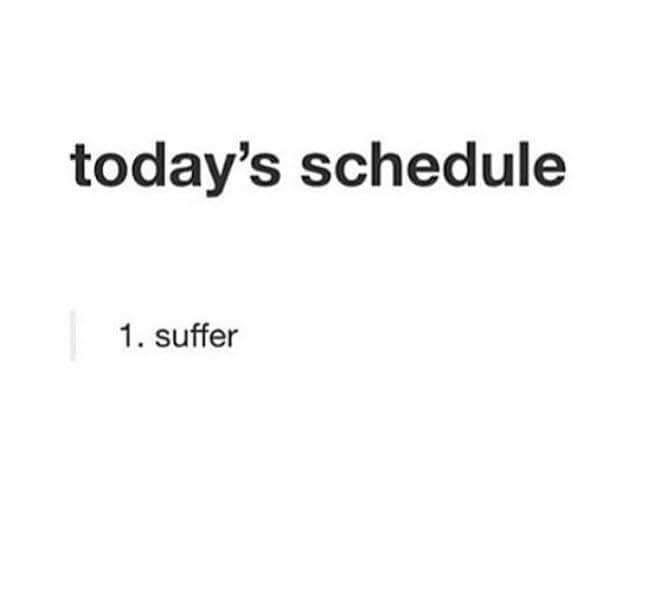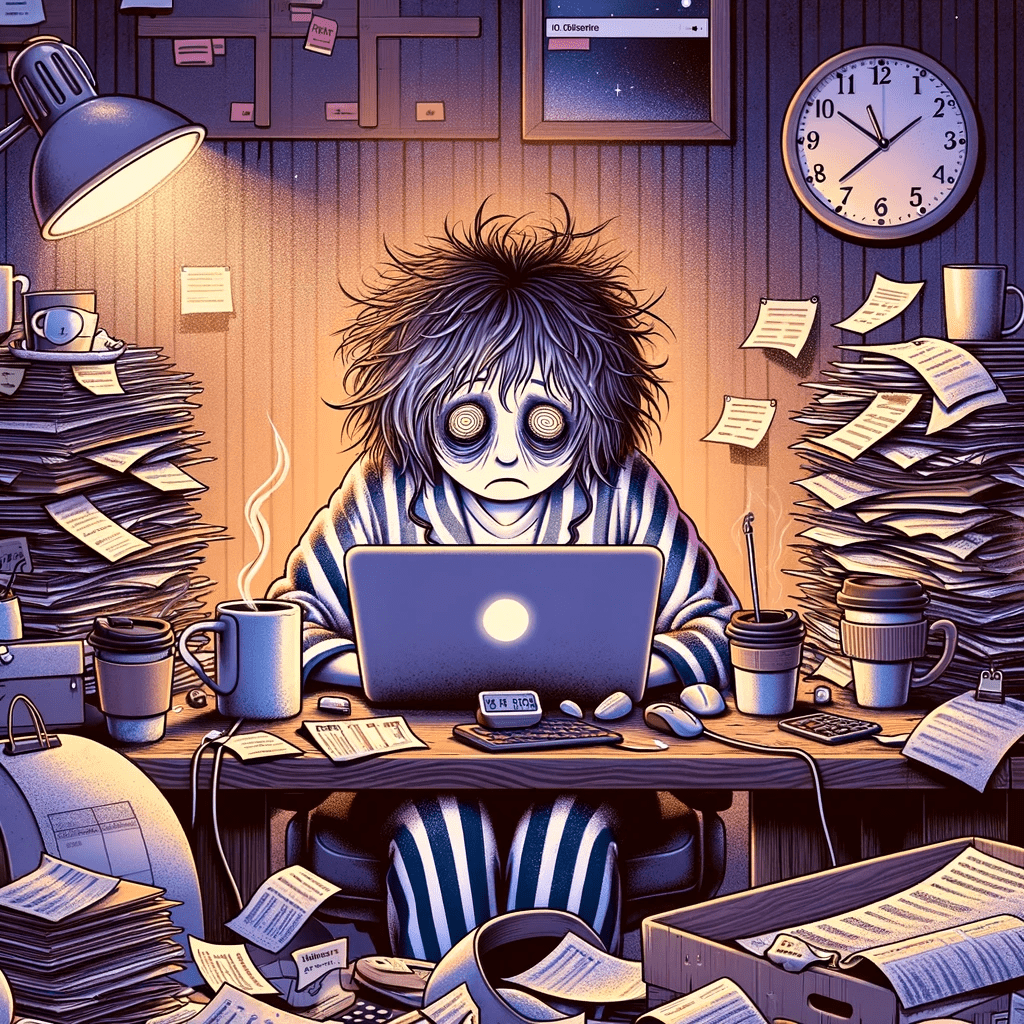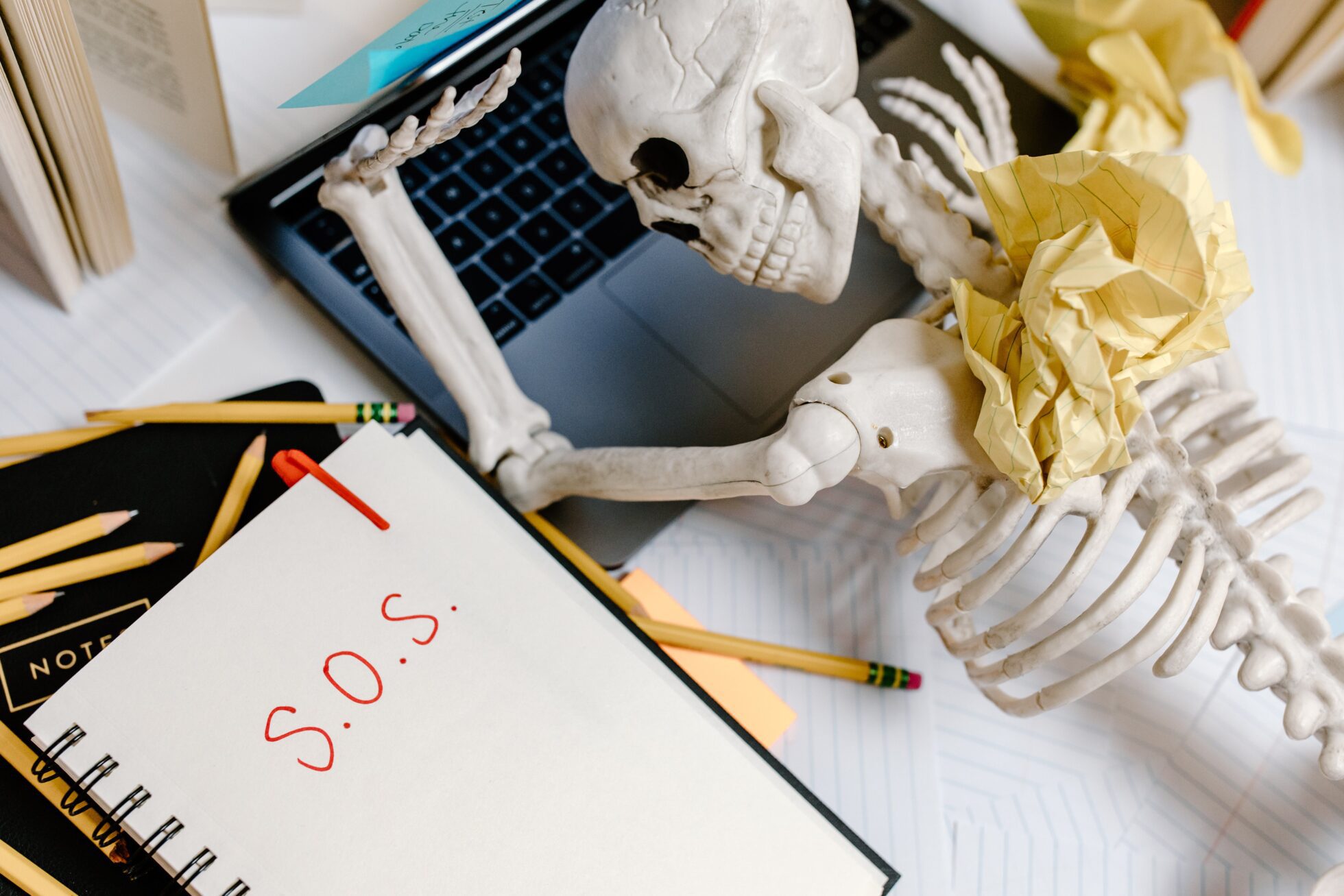We should never take for granted the change that remote work has offered most people in the last few years. While we were starting to see some hints of “working from home”, the pandemic meant that many businesses that would never have thought to let their staff remote work had their hand forced. And it changed EVERYTHING.
There are some people in the industry now who have never even experienced the traditional office environment. It may even feel so weird to some as the concept of only black and white TV or paying for everything with cash.
It’s completely changed lifestyles too. From the office dress code to how we look for a new role, even the entire set-up of our homes. Not since the introduction of the weekend has there been such a massive shift in work-life balance.
But for all the benefits of remote work, it does come with some caveats. The friction to go to work is a lot less, but this does mean that we may force ourselves to work longer hours or working when we’re not feeling well, we might even find ourselves opening our computer even when we’re meant to be on PTO.
Remote work burnout is characterized as a state of physical, emotional, and mental exhaustion due to prolonged stress in a remote working environment. And with the increase in remote work it’s ultimately becoming increasingly prevalent. It can affect productivity, mental health, and personal relationships.
Addressing remote work burnout is vital for employee well-being and organizational health. However, it can be slightly trickier to identify and manage because there is a blur between home life and work life. We delve into the signs, the symptoms and what you can do as an employer, or even employee, in this situation.
What Are the Signs of Remote Work Burnout?
Burnout can be sneaky and it can often creep up when you least expect it. Many people could just have a few days of feeling overwhelmed, put things down to the time of year or just a lack of sleep. However, recognizing the signs and symptoms of burnout can make the difference between it being a small blip or becoming a much bigger issue.
Things to watch out for include:
An Unending Battle With Fatigue
You wake up feeling drained, as if you have slept in a washer-dryer. Tossing, turning, and any shuteye has been plagued with restlessness. This isn’t just the usual “I need another coffee” tiredness; it’s a deeper, more pervasive weariness that seeps into every aspect of your life.
Physically, you might feel like you’re moving through molasses. Emotionally, everything feels a bit more overwhelming, and mentally, it’s like your brain is wrapped in a thick fog. This constant fatigue is a red flag, signaling that your batteries aren’t just low; they’re struggling to recharge at all.
A Total Lack Of Motivation
Remember how you used to feel excited about starting your workday? If lately, that enthusiasm has packed its bags and left without notice, leaving behind a void where your motivation used to be, it’s worth paying attention. This drop in drive and interest is a classic sign of burnout. Tasks that once sparked joy now feel like chores, and the projects that used to ignite your passion now barely kindle a flicker of interest. It doesn’t even need to be that you “hate” your job; you could still think of your colleagues and different elements of your job happily or with neutrality, but the overall vibe just feels like a slog.

Having A Short Fuse/ Feeling Irritability and Frustration
If you find yourself snapping at minor issues or feeling uncharacteristically irritable – like getting annoyed at the keyboard for not typing fast enough or the coffee for not being the right temperature – it might be burnout knocking at your door. This heightened sensitivity and frustration is not just a bad mood; it’s a sign that your emotional buffer is running thin. Feeling tearful and feeling generally overwhelmed are two other ways that this can manifest as well.
Difficulty Concentrating
When burnout starts affecting your focus, it’s like trying to see through a misty window. Concentrating on tasks becomes a herculean effort. You might find yourself reading the same email three times and still not grasping its content or starting a task only to trail off into a maze of distractions. This cognitive fog is a hallmark of burnout, making it hard to stay on track and be productive.
Isolation and Withdrawal
In a remote work setup, it’s easy to feel disconnected, but when burnout enters the picture, this sense of isolation intensifies. You might start withdrawing from virtual meetings, feeling like you’re on an island far removed from your colleagues and the heartbeat of your work. This withdrawal isn’t just about physical distance; it’s an emotional and mental retreat, a sign that you’re losing touch with the communal aspect of your work.
Lack Of Self Care

Were you doing yoga sessions on your lunch break? Or taking a long stroll outside between calls? Have you stopped getting dressed for the day but now are just living in unwashed jammies (Hey, if you normally work in your PJs that’s cool, no judgment from us, but if it’s not your normal vibe, it may be a sign). If taking care of the basic things is becoming too hard, this a massive flag that things aren’t all as they should be.
How Does Remote Work Burnout Differ from Traditional Burnout?
While burnout is a common thread in both remote and traditional work environments, each one is distinctly different and dealing with it can also vary. Understanding these differences is crucial in tailoring our approach to prevention and recovery.
Isolation in Remote Work
While one of the best things about remote work is less interruptions (although that’s not always the case) one of the most striking aspects of remote work burnout is the sense of isolation it can bring. Unlike a traditional office, where impromptu coffee breaks and casual chats by the water cooler allow for interpersonal connection, remote work often lacks these organic social interactions. This isolation is a disconnection that resonates on a deeper, emotional level.
Blurred Boundaries AKA Home = Office (and Vice Versa)
The lines between personal and professional life can often blur into a confusing overlap. The kitchen table becomes a desk, and the bedroom, a makeshift office. This lack of clear demarcation often leads to extended work hours and difficulty in mentally clocking out. A report found that a third of remote workers struggle with unplugging after work hours, underscoring the need to establish firm boundaries when it comes to your personal space. This was always easy when your workplace was outside the home but trickier with remote work.
Digital Overload: The Tyranny of the Screen

Remote work burnout is often deepened by an overdependence on technology. Continuous emails, video calls, and instant messaging can lead to digital fatigue. The constant pressure to be digitally available and responsive can create a mentally exhausting environment, often lacking the warmth of face-to-face interaction. It can also lead to an increase in something called digital presenteeism as well.
One of the biggest factors of digital fatigue is that we have all shifted our view of leisure as well. Where once we might have gone out for drinks after work with colleagues or joined a club for a hobby, many are shifting from their laptops to watching Netflix on the couch, or are scrolling TikTok on their phones in the bathroom. There’s no break.
Physical Activity Takes a Backseat
How Can You Set Healthy Work-Life Boundaries?

As you can see, setting very defined boundaries and rules are really important for protecting your mental health and risk of burnout. We want the space to be productive and focused, while also making sure our home remains our sanctuary and living space.
The first step in this balancing act is defining your workspace. This doesn’t necessarily require a separate room; it could be as simple as a dedicated corner of your living space. The key is to establish a zone that your mind associates with ‘work mode’. This physical demarcation acts as a mental signal, helping to switch your focus from home to work and vice versa. It’s about creating a sanctuary for productivity, away from the distractions and comforts of your personal life.
Equally important is sticking to a schedule. While we greatly advocate asynchronous work and flexibility here at tl;dv, we still think that fixed working hours can act like guardrails, preventing you from swaying into the realms of overwork or underwork. By clearly defining when your workday starts and ends, even if it’s just to yourself, you create a rhythm that respects both your professional responsibilities and personal time. This discipline helps in crafting a routine where work doesn’t bleed into your personal life, allowing you to fully disengage and recharge.
Incorporating technology timeouts is another vital strategy. In a world where screens are omnipresent, regular breaks from digital devices can be a balm for the mind. These timeouts are essential to reduce digital fatigue, a common ailment in remote work settings. It’s about giving your eyes and brain a rest from the constant bombardment of information and blue light, allowing for moments of serenity and reflection. You don’t need to attend every meeting either. Using tl;dv your team can meet without you, or individuals can have discussions and share with the wider team later on. Utilizing AI summaries can cut time slippage and make sure that everybody is logging off an enjoying their dinner rather than chasing their tail with a project.
Communication of boundaries with colleagues and supervisors is also key. By clearly articulating your working hours and availability, you set expectations and prevent the encroachment of work into your personal time. This communication is not just about setting limits; it’s about mutual respect and understanding, ensuring that both you and your team can work harmoniously within defined parameters. Even something a simple as using the availability markers on slack
Lastly, the practice of taking regular, short breaks throughout the day cannot be overstated. These pauses are like the moments you take to breathe deeply while walking the tightrope, recentering yourself. They help in breaking the monotony, refreshing your mind, and refocusing your attention. Whether it’s a five-minute stretch, a quick walk, or just stepping away from your desk, these breaks are small yet powerful steps in maintaining your balance on the work-life tightrope.
Together, these strategies weave a safety net that supports your journey in remote work, ensuring that you walk the tightrope with confidence, maintaining a healthy balance between your professional and personal lives.
I Think I'm Suffering from Burnout: What Do I Do?

If you’re suspecting that burnout is affecting your remote work life, here’s a checklist of steps to help you navigate through it:
- Acknowledge Your Feelings: Recognize and accept that you’re experiencing burnout. It’s the first step towards addressing it.
- Speak to a Professional: Consult a mental health professional. Seeking expert guidance can provide you with tailored strategies to combat burnout.
- Open Up to Your Supervisor or HR: Communicate your situation to your supervisor or HR department. They may offer solutions like flexible scheduling or mental health resources.
- Set Clear Work Boundaries: If your work and personal life are blurring, redefine and enforce strict boundaries.
- Schedule Regular Breaks: Incorporate short, frequent breaks into your workday to prevent continuous strain.
- Prioritize Self-Care: Engage in activities that promote relaxation and well-being, such as exercise, hobbies, or mindfulness practices.
- Reassess Your Workload: Look at your current tasks and responsibilities. Is there room for delegation or prioritization?
- Stay Connected Socially: Interact with friends, family, or colleagues to combat feelings of isolation.
- Limit Screen Time Post-Work: Learn how to how to reduce screen time outside of work to give your mind a rest from digital stimuli.
- Create a Relaxation Routine: Develop a routine that helps you unwind after work, like reading, yoga, or a warm bath.
- Revisit Your Sleep Schedule: Ensure you’re getting adequate and quality sleep, as it’s crucial for mental and physical recovery.
- Practice Mindfulness or Meditation: These practices can help reduce stress and improve your overall mental state.
- Re-evaluate Your Workspace: Make sure your work environment is conducive to productivity and comfort.
- Consider a ‘Digital Detox’: Occasionally disconnect from all digital devices to give your mind a complete break.
It’s A Team Effort: How Everyone Can Help with Burnout
Beating burnout is a collaborative mission. It’s vital that companies play an active role alongside individual efforts. Here’s how workplaces can step up:
What Companies Can Do:
- Create a ‘Burnout Awareness’ Program: Develop programs that educate employees about burnout, its signs, and prevention techniques. This could include workshops, webinars, and resource materials.
- Introduce ‘No Meeting’ Days: Set aside certain days where no meetings are scheduled, allowing employees to focus on deep work or to catch up without interruptions.
- Promote a ‘Real Off Time’ Policy: Encourage employees to fully disconnect after work hours. This might mean setting an example by not sending emails during evenings or weekends.
- Wellness Benefits and Subscriptions: Offer subscriptions to wellness apps, mental health platforms, or fitness memberships. This shows a commitment to employee well-being beyond just the workplace.
- Regular Check-ins and Feedback Sessions: Instead of waiting for annual reviews, have more frequent check-ins to understand how employees are coping and what support they might need. These can be super casual and less about work and more of a chance to chat.
Some Helpful Tools
As we navigate the nuances of remote work, it’s clear that overcoming burnout requires effort from both individuals and organizations. By working together, we can create an environment that not only fosters productivity but also supports our mental health and well-being.
To help you get started on this journey, here are some tools and resources:
- Headspace: An app for meditation and mindfulness to reduce stress and improve focus.
- Asana, Trello: Project management tools that can help organize work and reduce the feeling of being overwhelmed.
- Slack’s Do Not Disturb Feature: Useful for managing communication and ensuring uninterrupted work time.
- For effective task management and visual organization of projects.
- tl;dv: Record meetings so that people can catch up at their own pace and feel in control of their own time.
Remember, addressing burnout is a journey, and it’s okay to take it one step at a time. Utilizing these tools and embracing the support from your workplace can make a significant difference.





